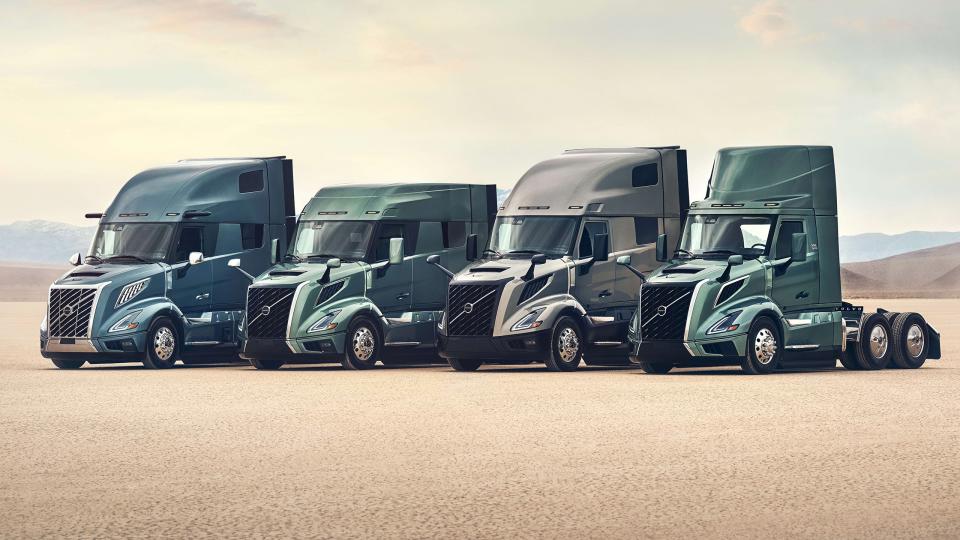New Volvo Semi Truck Uses Wavy Pistons to Make 1,850 LB-FT of Torque

Being a trucker seemed cooler in the '80s. I blame Sylvester Stallone and Kurt Russell, with a little bit of Jerry Reed southern swagger still hanging on. While we think of semi trucks as American icons, in terms of global sales, Volvo is one of the biggest players. It’s been an innovator in trucking since it built its first commercial truck in 1928. The company's latest rig, the new VNL, represents another leap forward in technology. More than a refresh, it's 90% new and uses some ingenious engineering that makes it 10% more efficient than Volvo's trucks from 2015.

The new VNL comes in six different cab configurations, four trim levels for both interior and exterior, and with three versions of the D13 inline-six engine with maximum torque of 1,850 lb-ft. Volvo claims that the truck can return 8.5 mpg driving at 85 mph; I’ve towed with duallys that struggled to get that.
While the total fuel efficiency increase comes from all the systems of the truck contributing marginal gains, what’s happening under the hood is more interesting than wheel covers and intelligent cruise control.
Starting from the inside of the 13-liter engine, Volvo has optimized its waved piston crown design first introduced in 2016. The company's engineers had used computational fluid dynamics to model the flow of combustion inside the chamber. In doing so, they discovered a flaw with traditional piston crowns: when fuel is sprayed from the top center of the combustion chamber towards the cylinder walls, the flame fronts propagate towards the walls before converging, leaving a column of unused oxygen in the center of the chamber.
To combat this, the D13's piston crowns are manufactured with ridges arranged radially. Fuel injector nozzles are pointed to spray in the valleys between them, creating flame fronts that move toward the cylinder wall and then reverse back to the middle. The original wave piston design had six segments, but the upgraded version has seven. I bet we can guess where future generations are heading.


 Yahoo Autos
Yahoo Autos 